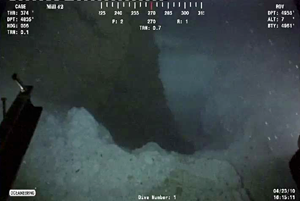BP Oil Spill Physics Challenge
Category
Published on
Abstract
 On May 13 Professor Wereley used optical feature tracking to estimate the volume flow of oil from the on-going BP Macondo oil field spill. Several other independent scientists also performed similar measurements at about the same time. These several measurements were all in the ballpark of 20,000-100,000 barrels per day--greatly in excess of the estimates provided by BP of 5,000 barrels per day. The unforeseen effect of these first independent flow rate calculations was to bring the issue of oil flow rate to the fore. Wereley was subsequently appointed to a government task force called the Flow Rate Technical Group to calculate an official government flow rate estimate. The group arrived at an official, government-sanctioned estimate of 35,000-60,000 barrels of oil per day after requesting and receiving better quality and longer videos of the oil flow. This presentation/discussion will center on those calculations, their limitations, their improvement and their future uses in this on-going disaster. In particular, the Purdue Physics community will be challenged to look at these same images and movies and arrive at their best estimates of flow rate.
On May 13 Professor Wereley used optical feature tracking to estimate the volume flow of oil from the on-going BP Macondo oil field spill. Several other independent scientists also performed similar measurements at about the same time. These several measurements were all in the ballpark of 20,000-100,000 barrels per day--greatly in excess of the estimates provided by BP of 5,000 barrels per day. The unforeseen effect of these first independent flow rate calculations was to bring the issue of oil flow rate to the fore. Wereley was subsequently appointed to a government task force called the Flow Rate Technical Group to calculate an official government flow rate estimate. The group arrived at an official, government-sanctioned estimate of 35,000-60,000 barrels of oil per day after requesting and receiving better quality and longer videos of the oil flow. This presentation/discussion will center on those calculations, their limitations, their improvement and their future uses in this on-going disaster. In particular, the Purdue Physics community will be challenged to look at these same images and movies and arrive at their best estimates of flow rate.
I am going to go through an exercise in the seminar in which all the attendees come up with their own estimate of the oil flow rate. I will come to the seminar with handouts of still frames extracted from the first movie that BP posted on May 12. The handout is available at: Oil Spill Flow Calculation Worksheet. You can work through the calculations during the seminar. It doesn’t take long. Additionally, I know that some of you are excited to get your hands on the videos and do a closer inspection yourselves. In case that describes you, I’ve posted the video and several frames that I’ve extracted from the video on my web site. The address is: https://engineering.purdue.edu/~wereley/oilspill/
Feel free to spend some time looking at the video and images extracted from the video and use whatever approach you think correct to come up with a solid estimate of the oil flow rate. Also, the video is posted in a streaming format here: http://www.deepwaterhorizonresponse.com/go/doc/2931/548775/
Bio
 Professor Wereley has bachelor degrees in Physics (Lawrence University, 1990) and Mechanical Engineering (Washington University, St. Louis, 1990) followed by masters and doctoral degrees from Northwestern University (1992 and 1997). He is currently Professor of Mechanical Engineering at Purdue University where he has been working since 1999. His current research interests focus on fluid flows in microscopic domains, commonly known as microfluidics. Professor Wereley is the co-author of Fundamentals and Applications of Microfluidics (Artech House, 2002 and 2006) and Particle Image Velocimetry: A Practical Guide (Springer, 2007). The latter book led to his involvement with the oil spill because the total amount of oil spilled is a central issue in the still ongoing oil spill debate.
Professor Wereley has bachelor degrees in Physics (Lawrence University, 1990) and Mechanical Engineering (Washington University, St. Louis, 1990) followed by masters and doctoral degrees from Northwestern University (1992 and 1997). He is currently Professor of Mechanical Engineering at Purdue University where he has been working since 1999. His current research interests focus on fluid flows in microscopic domains, commonly known as microfluidics. Professor Wereley is the co-author of Fundamentals and Applications of Microfluidics (Artech House, 2002 and 2006) and Particle Image Velocimetry: A Practical Guide (Springer, 2007). The latter book led to his involvement with the oil spill because the total amount of oil spilled is a central issue in the still ongoing oil spill debate. Sponsored by
Cite this work
Researchers should cite this work as follows:
Time
Location
Fowler Hall, Purdue University, West Lafayette, IN